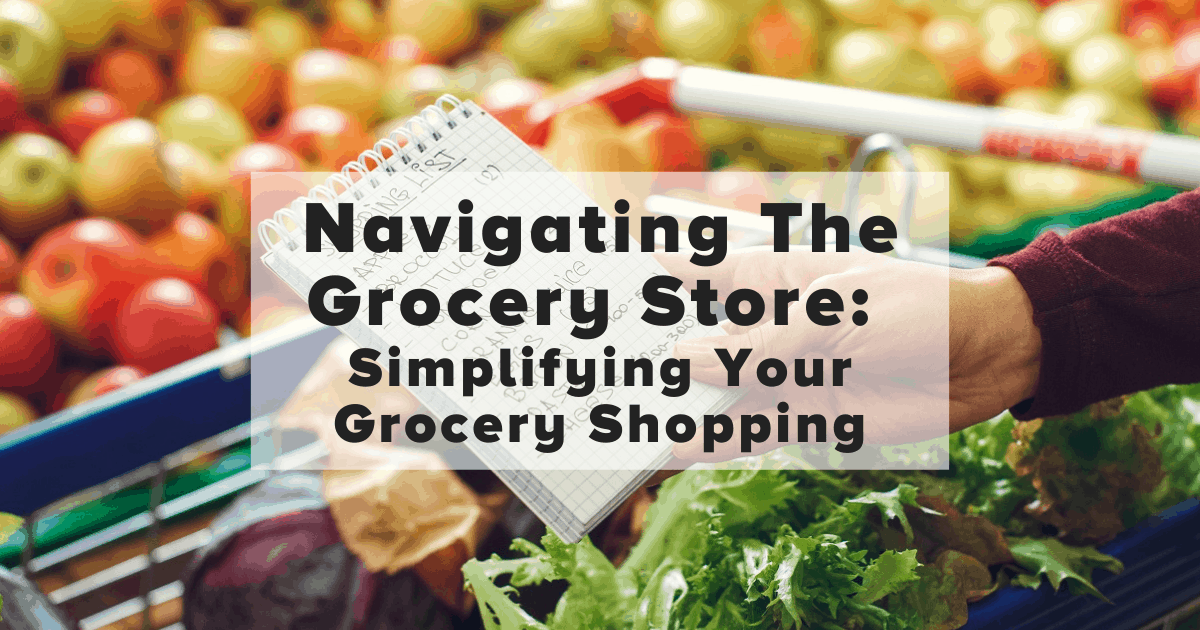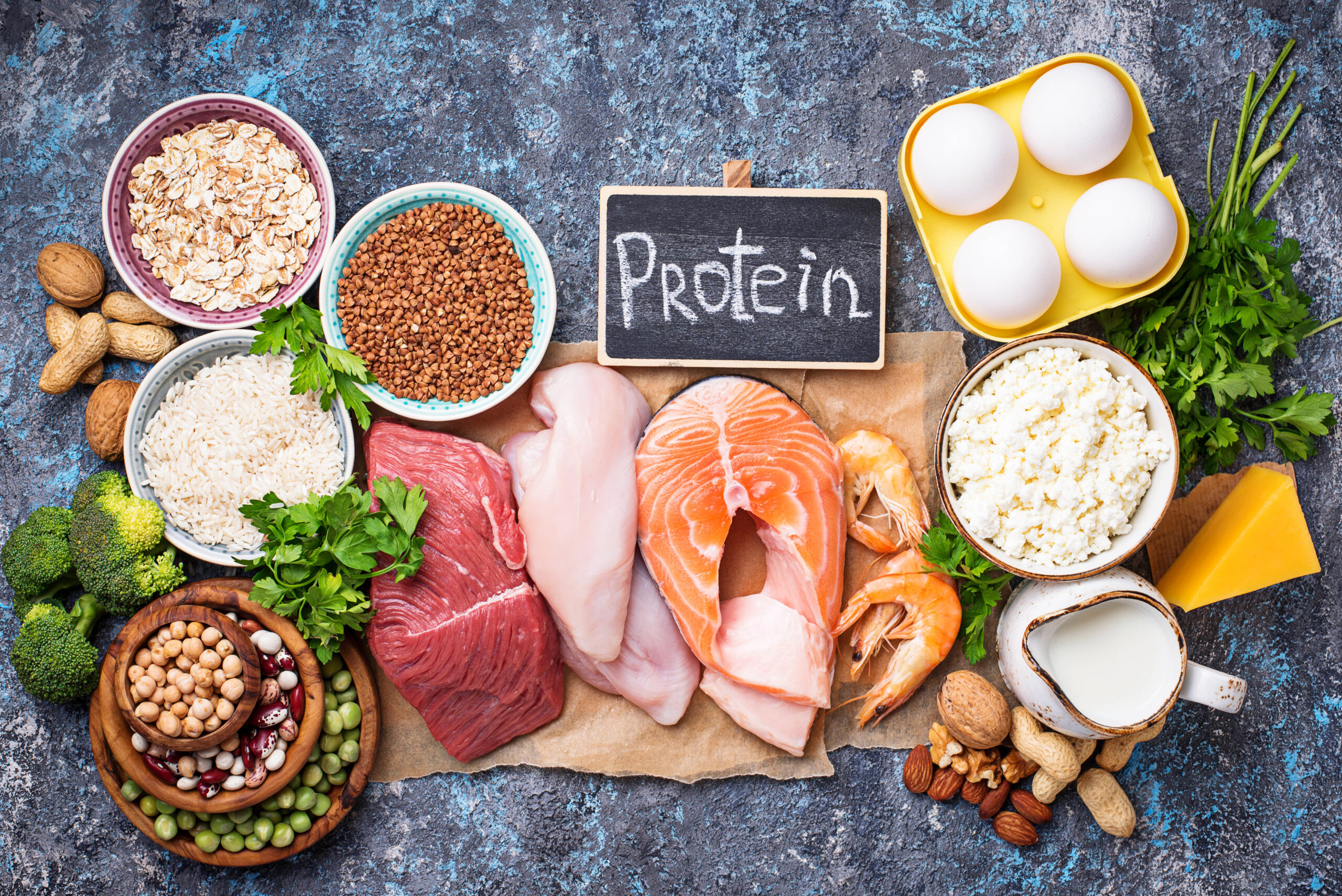

Hi, my name is Kate Simpson. I’m the health coach here at Arizona Wellness Medicine. And today I’m going to be sharing some tips on how to simplify your grocery shopping experience and navigating the grocery store now that you’ve transitioned to the Paleo way of eating. So I’m sure that it makes sense that as you change what you’re eating, you’re going to change the way in which you go grocery shopping. Before we head into the store, I want to give you my top two tips for simplifying your grocery shopping experience.
My Top Two Tips
My first tip is to make a list. We want to come into the grocery store with a list so that we’re intentional about what we’re buying and we’re decreasing the opportunity for those impulse purchases. So when you are menu planning for the week, you can download an app for your cell phone or go old school and keep a paper list. But you want to make sure that you have a running list so that you’re ready to go once you’re inside.
My second tip is to go grocery shopping at the least busy time that you can manage. We’re trying to cut down on the crowds and the potential stress. You’re learning a new way of eating and a new way of shopping. You want to be able to come into the grocery store and be intentional about the ingredients that you’re purchasing. You want good quality ingredients. You’re going to become an expert label reader. You want to make sure that you’re not purchasing anything that has hidden ingredients that’s going to take you off the plan that you want to be on.
The Layout of the Land
So as we head into the grocery store, I’m sure the layout is very familiar to all of you, because the majority of grocery stores are laid out the same way. On the perimeter, we have our produce, our meat and our seafood, and our dairy. And then the center aisles are going to contain everything else. We’re going to start in produce and we’re going to spend the majority of our time there. Probably up to 75% of our time is going to be spent in the produce department.
Before we dig into that, I just want to highlight something. We are going to encourage you to purchase the best quality ingredients that you can afford. So that’s going to be organic, grass-fed, pasture-raised, wild caught. In the produce department, especially if budget is a concern, you can head over to the Environmental Working Group. They produce two lists that will be helpful. One is called the Clean 15. It highlights the 15 cleanest fruits and vegetables that you can safely purchase non-organic. The other list is called the Dirty Dozen. It identifies the top 12 vegetables and fruits that contain the most toxins, and that if you’re going to purchase those particular fruits and vegetables, you should do so and choose organic for those. So Environmental Working Group will give you those two lists.
So we’re in the produce department, we’re looking around, we’re seeing a variety of colors and textures, and that’s what we want to choose. We want to choose a variety. When we are doing our menu planning, we want to keep that in mind that we want this nice rotation of different vegetables running through our weekly menu. And then the fruit that we choose, we want to look for those lower sugar options like citrus and berries. And in the back of your mind, you can think, I’m going to look to be eating the rainbow. So when you’ve wrapped up your shopping in the produce department, take a look in your basket and make sure that you have that nice variety of colors in your basket.
So as we head to meat and seafood, again, this is where we’re looking for grass-fed, grass-finished beef, bison, lamb; pasture-raised chickens and turkeys; and then wild caught, cold water, fatty fish for our seafood. I want to highlight in seafood, this might be an area where you have a lot of really good quality options for frozen. Don’t hesitate to make that purchase. Because again, I think that those ingredients, as long as they’re cold water, wild caught, are going to be just as good as your fresh options.
So as we move to dairy, keep in mind that this is not a department that we’re going to spend a lot of time in, because for the most part, dairy really isn’t a part of the Paleo way of eating. A couple of exceptions are pasture-raised omega-3 eggs… And don’t confuse pasture-raised and cage-free as being the same, because they’re not. So we want to choose the pasture-raised the option. And then grass-fed butter. Now, this is eliminated on the 30 day reset, but if you’re someone that can tolerate dairy, you can try and reintroduce this at a later date in moderation. You just want to make sure that you choose that grass-fed, pasture-raised option for the butter.
So before we move into the center aisles, I want to highlight frozen food. I mentioned it with seafood. This is another department where as if you’re menu planning, you may just find that frozen vegetables or fruit might work out better for what you’re planning for the week. Don’t hesitate to make that purchase. Typically, vegetables and fruit are picked at their height of freshness, frozen quickly to retain their nutritional value. So that’ll be a great option for you.
So when we head into those aisles, again, this is where we are going to be very intentional about what we’re buying. We’re going to spend that time to become that expert label reader. We want to make sure that we’re not purchasing anything with hidden ingredients. So for example, a can of coconut milk, we’re looking for a nice can of organic, full-fat coconut milk as a part of our Paleo nutrition protocol. It should have coconut and water and nothing else. So in addition to some whole food fats, like coconut milk and olives and sardines, we’re still going to buy our spices. We’re going to buy good, healthy oils, like olive oil and avocado oil and coconut oil.
And then on the international food aisle, this is where you might find some good substitutions. So for example, a good substitution for soy sauce, because we’re eliminating soy with the Paleo way of eating, is coconut aminos. And then ghee is a great substitute if you are someone that doesn’t tolerate dairy very well, and you’re going to most likely find ghee on the international food aisle.
So that’s a wrap-up of this topic. I hope it takes some of the mystery out of shopping Paleo. And then I just encourage you to tune in for another tip. Thanks so much. Have a great day.
Share:
Dr. Emily Parke
Social Media
Most Popular Posts
Subscribe To Our Newsletter
Related Posts

How Fructose Intake Affects Metabolic Health: What You Need to Know
Fructose, found naturally in fruits and added to processed foods as high fructose corn syrup, impacts health. Learn the metabolic effects of fructose intake.

Get More Vitamin D for Better Health!
Of all the vitamins and minerals you should be sure you’re getting enough of, vitamin D is perhaps one of the most important. The benefits of vitamin D are widespread and pretty incredible.

The Science Behind Protein: The Optimal Amount of Protein in the Diet Based on Age and Activity Level
Different amounts of protein are needed at different stages of life. Learn about protein, how much you need, and what happens when you don’t get enough.

Magnesium: The Essential Mineral, Its Role in the Body, and What to Know About Magnesium Supplements
Learn about the mineral magnesium, its role in the body, how to spot magnesium deficiency, and the most bioavailable forms of magnesium to supplement with.
